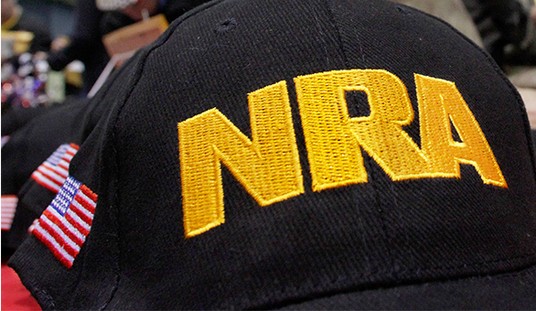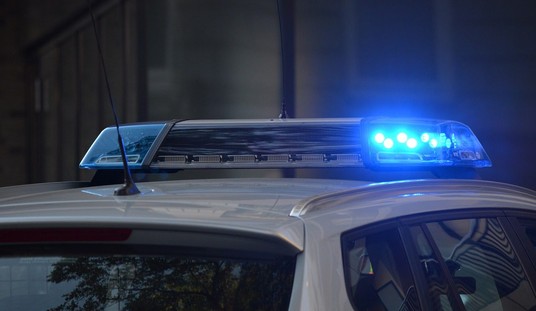As Election Day approaches, the National Rifle Association is gearing up in battleground states. With more than four million members and as many as thirty million Americans who tell pollsters they look to the NRA for leadership on Second Amendment issues, many feel the organization could have real impact in key states.
We’ve done it in the past and with NRA Executive Vice President Wayne LaPierre’s declaration more than a year ago that President Barack Obama represents the greatest threat to Second Amendment rights in a generation, NRA members are working overtime to deny him a second four years in the White House. Most feel that though he was stymied during his first term, he meant it when he told Handgun Control’s Sarah Brady that he intends to deliver on his promises to gun controllers, but will have to work “under the radar” for now and presumably until after he is re-elected.
If what happened during the recent gubernatorial recall effort in Wisconsin can be duplicated in other states, the NRA could make the difference in a number of close and crucial states.
In the 2000 presidential race in which George W. Bush defeated Al Gore with the support of voters who looked to the NRA for leadership, post-election analysis showed that in those states targeted by the NRA, the NRA campaign shifted as much as three percent of the vote from Gore to Bush. In today’s world, that’s a huge number and was the reason President Clinton cited the NRA effort as the major reason his vice president lost five states and the presidency.
In early 2012, the NRA went “all in” supporting Wisconsin Gov. Scott Walker as he faced a well-funded recall effort that many thought might cost him the Badger State governorship.
The race was characterized by most observers as pitting Walker against organized labor, but it was also a contest between an incumbent Governor who has been a strong Second Amendment supporter throughout his political career and a challenger who had a long and consistent anti-gun record.
A few weeks before Wisconsin voters were scheduled to go to the polls to decide his future, I asked Governor Walker how things looked. Referring to his campaign’s internal polls, the Governor said “Would you believe 48 percent to 48 percent with 4 percent undecided?” It was so close on the eve of the recall that very few analysts were willing to predict the final outcome.
Few would have been surprised if the results were so close as to require a recount. Democratic and liberal attorneys were flocking into the state prepared to contest the results as they have in other states over the last few years, knowing that an aggressive legal team can often stymie the other side and hand their candidate a political victory.
The NRA’s political influence comes not just from the willingness of gun owners to stand up for their rights, but from the fact that many of them are Democrats, Independents and union members willing to support candidates who support the Second Amendment regardless of party. Many observers thought as the NRA began its campaign on behalf of Governor Walker that our ability to deliver for him would be thwarted by the nature of the race and that union members would not be swayed by the gun issue given the nature of the contest. They were wrong.
Walker had defeated Milwaukee Mayor and former Congressman Tom Barrett for the governorship in 2010 by a 52 percent to 46 percent margin. The recall vote was expected to be even closer and many expected Walker to lose as no governor facing a recall anywhere in the country had ever survived.
It didn’t turn out that way. The networks called the race within a half hour or so of the time the polls closed and when the votes were all counted Walker had won by a larger margin than anyone suggested and, indeed, by a greater margin than in his first face off with Barrett. There was no challenge, the Milwaukee Mayor conceded defeat, the lawyers left and the very groups that had encouraged the effort to oust Walker in the first place began distancing themselves from the Barrett campaign.
The NRA campaign, led by NRA-ILA Director Chris Cox, was directed not just at Wisconsin NRA members, but at all Wisconsin gun friendly voters and especially those who were declared Independents or lived in union households, urging them to support Walker who was clearly more friendly to gun owners that his opponent. As a legislator and as Milwaukee County Executive, Walker was a strong Second Amendment supporter and as Governor signed the law making Wisconsin the 49th state to legalize “concealed carry.” Barrett, on the other hand, had served in Congress and voted consistently to weaken the rights of American gun owners.
The 2012 Wisconsin recall election provided the NRA-ILA political team with a difficult challenge because of the nature of the campaign being run against Governor Walker. Organized labor launched the recall effort and along with hard left allies across the country provided the financing and ground troops for the effort. They pictured the reform governor as the nation’s main enemy of working men and women. The recall campaign was, in essence, a crusade by organized labor to oust a governor that labor leaders viewed as hostile to their interests.
Since millions of those who look to the NRA for leadership on Second Amendment issues are also union members, the question facing the NRA in Wisconsin was whether Walker’s support of gun owners and sportsmen would seem more important to Independents and union voters than his alleged hostility to organized labor.
The NRA accepted this challenge and decided to provide meaningful help to Walker the NRA would have to go after this most difficult and perhaps most conflicted segment of the Wisconsin electorate.
The campaign to persuade these voters to support Walker as a friend of the Second Amendment included targeted television and radio advertising, an internet effort and targeted mail as well as telephone calls designed to excite and deliver gun friendly votes on recall day.
The NRA wanted to see just how effective we’d been as we prepared for the fall campaign. Cox therefore commissioned a polling firm to question a sample of those who actually voted to see what parts of the campaign were effective and just how helpful our efforts had been.
The polling firm first asked voters if they support the goals and objectives of the National Rifle Association. Forty-five percent of voters answered yes to this threshold question and the firm drew a sample of 600 from this group to determine how NRA-friendly voters responded to the NRA message and affected the outcome or margin.
The results were astounding even to those of us who believed our effort would make a difference:
First, thirty six percent of NRA-friendly Wisconsin voters turned out to be Independents and thirteen percent were union members or lived in a union household. These are the voters the NRA campaign targeted with results that bode well for our ability to do the same in other states.
Analysts were amazed that Scott Walker managed to win 38 percent of the union vote, but that number makes more sense when one realizes that NRA-friendly union voters gave Walker 65 percent of their vote and even government sector union members voted 62 percent for the Wisconsin governor.
Meanwhile, NRA-friendly Independents were voting for Walker over Barrett by a three-to-one margin. All in all, NRA-friendly Wisconsin voters gave the Governor 77 percent of their vote.
That margin helped make his 53 percent overall vote and 7 point victory possible.
The NRA Wisconsin campaign flummoxed the analysts predicting either a Walker defeat or an all-night nail-biter. The NRA effort effectively moved gun-friendly Wisconsin voters into Walker’s corner and trumped the issues his opponents hoped would cost him the governorship.
When it was over, one of Governor Walker’s pollsters said that while the Governor might have won without the NRA effort it would have been by a very slim margin. He said the actual margin was almost wholly attributable to the NRA campaign on the governor’s behalf.
As those interested in this November’s outcome who have looked at what happened in Wisconsin know, the National Rifle Association and voters who value the Second Amendment can move votes more surely than almost any other “interest” in the country. Wisconsin proved not only that gun-friendly voters will respond when facing a choice between a Second Amendment friendly candidate and an anti-gun candidate, but that the NRA has the capability, expertise and credibility to do just that.
The NRA’s political operation and NRA members around the country are working to duplicate these results at the Presidential level in November. NRA has targeted key states and using the model that worked so well in Wisconsin are hoping that their four million members and the thirty million others who, according to polls, look to the NRA for leadership on Second Amendment issues can make the difference in key states as they did in 2000.
NRA-ILA Director Chris Cox put it best when he said recently that if the Romney/Ryan team can get to forty eight or forty nine percent in these states, the NRA effort can and will put them over the top. If that happens, Barack Obama can return to Chicago and spend the next four years working on his Presidential Library.








Join the conversation as a VIP Member